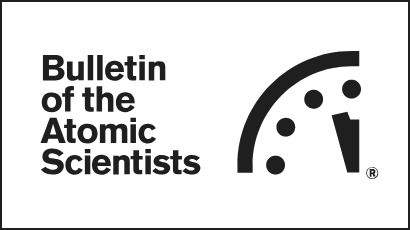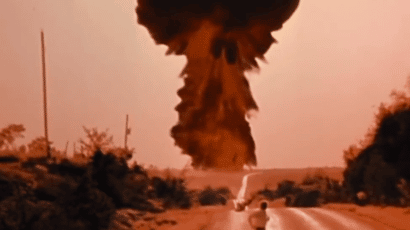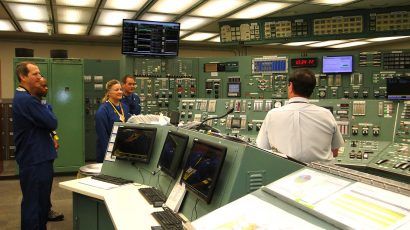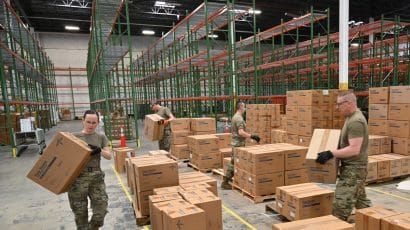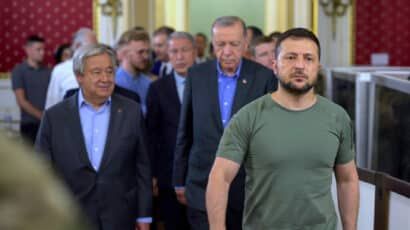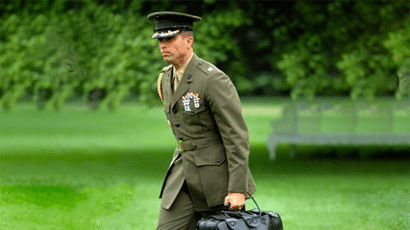Search results for nuclear terrorism
Virtual Tour: Turn Back the Clock “] “Atomic” fever swept America in the 1950s, shaping people’s hopes and fears and inspiring daring new dreams. The “atomic” future seemed boundless when nuclear energy began powering the nation’s cities, and the promise of nuclear medicine was beginning to emerge. From cars to comic books, few aspects of … Continued
Time for a nuclear pause agreement?
Nuclear arms control is in the deep freeze. But if nuclear-armed states temporarily commit not to conduct nuclear tests or produce fissile material for weapons, they can position themselves for an eventual thaw.
The psychology of nuclear restraint
The key variable that changed in August 1945 and led to 70 years of nuclear peace was the perceived enormity of the choice to drop the bomb.
Fearful of a nuclear Iran? The real WMD nightmare is Syria
As possible military action against Iran's suspected nuclear weapons program looms large in the public arena, far more international concern should be directed toward Syria and its weapons of mass destruction. When the Syrian uprising began more than a year ago, few predicted the regime of President Bashar al-Assad would ever teeter toward collapse. Now, though, the demise of Damascus's current leadership appears inevitable, and Syria's revolution will likely be an unpredictable, protracted, and grim affair.
Despite economic downturn, nuclear energy commerce is still worrisome
At the beginning of 2008, the nuclear power industry's euphoria over the much-hyped "nuclear renaissance" was in full swing. But as that year drew to a close, the hopes for a revival seemed delayed, if not derailed, due to faltering world economies. Little has changed this year to alter that prospect. As the global financial crisis has continued, demand for energy has plummeted along with the world's stock markets. Such news may help calm international security experts, who fear that a proliferation of nuclear energy know-how could lead to nuclear weapons proliferation.
Cleaning up Serbia’s nuclear legacy
The Vinca Institute of Nuclear Sciences, located 9 miles from Belgrade, is Yugoslavia's oldest nuclear research institute. Established in 1948 as the Institute of Research on the Structure of Matter, its efforts supposedly included an attempt to build a Yugoslav nuclear bomb. For almost 45 years, it collected Yugoslavia's and Serbia's radioactive waste.
Making the threat of nuclear war personal: An exercise
A Stanford University professor who teaches a technology and national security class explains why one of his assignments asks students to provide a list of the names of some of the people that they know personally who would probably die, either immediately or within a week or two of a nuclear attack on their hometowns.
Biden can rescue the Nuclear Regulatory Commission from industry capture
Over the past two decades, the US Nuclear Regulatory Commission (NRC) has been captured by the nuclear power companies it is supposed to regulate.
How to reduce both nuclear and pandemic threats after COVID-19
A focus on traditional threats and national security should give way to a greater focus on emerging threats and cooperative global security.
Learning from Labour: What nuclear disarmament can borrow from Jeremy Corbyn
In the United Kingdom, a socialist with a maximalist political strategy is a hair’s breadth away from 10 Downing. Might disarmament advocates learn something from Jeremy Corbyn about how to achieve goals that have long seemed out of reach?
How the next US nuclear accident could happen
America’s tech-reliant security culture might lead to disaster
Who should manage the nuclear weapons complex?
As the lame-duck Congress wraps up business, a serious debate is unfolding over the future of the US nuclear weapons complex. For the first time since the end of World War II, the long-held policy that places control of the design and production of nuclear weapons in civilian hands may be up for grabs. At issue: What is to be done with the National Nuclear Security Administration (NNSA), now located inside the US Department of Energy?
Deconstructing U.S. funding for nuclear material security
One year ago, President Barack Obama made a bold pledge to "secure all vulnerable nuclear materials around the world within four years." His immediate follow-through, however, has been wanting. For instance, his fiscal year 2010 budget request to meet this goal was actually $200 million less than what the Bush administration allocated a year earlier for securing nuclear material abroad. In fact, the administration still hasn't defined what it actually considers vulnerable nuclear material. So, in essence, Obama has lost a full calendar year in his four-year quest.
The status of U.S. nuclear weapons in Turkey
For more than 40 years, Turkey has been a quiet custodian of U.S. tactical nuclear weapons. During the Cold War, Washington positioned intermediate-range nuclear missiles and bombers there to serve as a bulwark against the Soviet Union (i.e., to defend the region against Soviet attack and to influence Soviet strategic calculations). In the event of a Soviet assault on Europe, the weapons were to be fired as one of the first retaliatory shots. But as the Cold War waned, so, too, did the weapons' strategic value.
Time to reconsider U.S. nuclear weapons in Europe
Often, it seems as though unimportant policy issues are constantly debated, while important ones are forgotten. For those decision makers who want to maintain the status quo, the advantage of the latter situation is the absence of any pressure for policy change. U.S. nuclear weapons in Europe are a perfect example. Despite the end of the Cold War about two decades ago, approximately 200 U.S. tactical nuclear weapons quietly remain on European soil. Whether they retain any relevance in the twenty-first century is debatable to say the least.
Deteriorating situation at Ukraine’s largest nuclear power plant
Russia and Ukraine are accusing each other of planning an imminent attack on the Zaporizhzhia nuclear power plant.
Giving an AI control of nuclear weapons: What could possibly go wrong?
If an autonomous nuclear weapon concluded with 99 percent confidence a nuclear war is about to begin, should it fire?
Bioweapons not an alternative to nuclear weapons
In his article “Deterrence, without nuclear winter,” Seth Baum argues that the greatest danger associated with current nuclear stockpiles is that nuclear winter will inevitably follow a nuclear strike and “threaten the whole of humanity.” To avoid such a catastrophic outcome, and thus promote drastic reductions in nuclear weapons, Baum proposes that nuclear states consider … Continued
It’s smart to scale back nuclear weapons spending
Two Republican Senators think the United States should protect nuclear weapons outlays at all costs. They're wrong.


